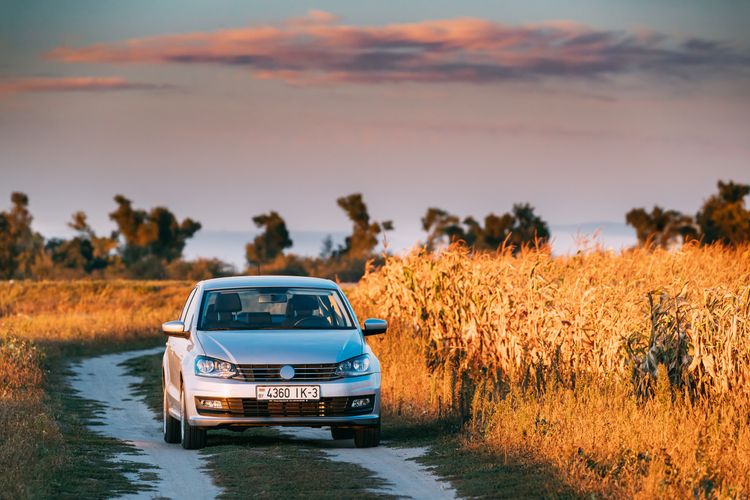What is a Engine Valve and its Working Mechanism?
Engines are unique inventions that allow us to tackle complex jobs effortlessly by converting fuel into mechanical power. The heart of an engine's function is a group of connected parts that work together. Each part is important for converting fuel into power.
A key component within an engine is the engine valve. It controls the flow of gases in and out of the combustion chamber. The valves open and close at specific intervals, ensuring the right fuel and air mix. This precise timing leads to a smooth and reliable engine performance, directly impacting your car's power output, fuel efficiency, and emissions.
The following sections will explain more about the car engine valve, their types, how they function, their structure, and their uses.
Share this article
Get Instant Car Insurance Quotes Online – Save Big!
Believe it or Not! Save upto* 75% on TATA AIG Car Insurance
List of Content
- What is an Engine Valve?
- Types of Engine Valves
- Working of an Engine Valve
- Types of Valve Operating Mechanisms
- Structure of a Modern Engine Valve
- Materials Used for Making Engine Valves
- Valve Timing Explained
- Conclusion
- FAQS
What is an Engine Valve?
Engine valves control the intake and exhaust of air and fuel in a combustion chamber within an engine. Their detailed designs and precise mechanisms are crucial to the engine's combustion process. The two main parts of an engine valve are: The Inlet or Intake Valve and Exhaust Valve.
Inlet Valve
The inlet valve in an internal combustion engine manages the precise timing of the air-fuel mixture entering the cylinder. Once the mixture is in, the valve closes tightly to seal the combustion chamber and prevent gases from flowing back out. These valves are made from nickel-chromium alloys, as they do not experience high heat.
Exhaust Valve
The exhaust valve in an engine plays an essential role in internal combustion. It opens to expel burnt gases from the combustion chamber and then seals shut to prevent leaks. The valve is made with a silicone-chromium alloy that can endure high heat.
Types of Engine Valves
Here are the different types of engine valves:
Poppet Valve
Poppet or mushroom valves are prevalent in car engines because of their effective design. These valves, shaped like mushrooms, expertly control the flow of gases into an engine. This type of valve includes two main components:
Head: The head is angled between 30 and 45 degrees, creating an ideal fit with the valve seat for a tight seal.
Stem: The stem has a groove for a spring retainer, enabling it to move up and down while interacting with the cam.
Sleeve Valve
Sleeve valves are tubular components positioned between the piston and the cylinder wall that control the air and fuel flow within the cylinder. These valves have small openings on their sides that align with corresponding openings in the cylinder. This alignment enables the flow of air and fuel through the holes.
Rotary Valve
Rotary valves function using a rotating disc with small openings known as ports. As the disc turns, it aligns with the intake, enabling the entry of gases and fuel. In the same way, the valve aligns with the exhaust manifold to release gases and liquids. Rotary valves are known for their smooth and quiet performance.
Reed Valve
Reed valves are unique engine valves frequently used in internal combustion engines. Unlike rotary valves with rotating discs, reed valves are made up of flexible metal strips that manage the airflow.
The force of fuel and air causes these strips to open, allowing the mixture to enter the engine through the inlet port. At the same time, the exhaust port stays shut, preventing gases from leaking out.
Working of an Engine Valve
Here is a Step-by-Step guide to the working of an engine car valve:
Step 1: Power is directed to the crankshaft, a vital part of every machine. This converts the piston's up-and-down motion into a rotating motion.
Step 2: The camshaft is linked to the crankshaft. The camshaft takes charge of managing the opening and closing of the engine's valves.
Step 3: The engine's piston begins a suction stroke. This creates an up-and-down motion. It prompts the camshaft to push down the inlet valve. This action allows air and fuel to enter the combustion chamber.
Step 4: Next, the piston ascends to generate compression, which causes the camshaft to close the inlet valve. A spring ensures the valve remains shut.
Step 5: This phase involves a power stroke where the air and fuel mixture combustion forces the piston down. The inlet and exhaust valves stay closed to maintain pressure and prevent gas leakage.
Step 6: The process starts with an exhaust stroke, causing the piston to move upward and push out burnt gases from the combustion chamber. The exhaust valve opens to release these gases into the engine's exhaust system.
The cycle repeats as the intake valves open again, allowing fresh air and fuel to enter the chamber.
Types of Valve Operating Mechanisms
Here are the two types of valve operating mechanisms:
Side Valve Mechanism
In a side valve system, the valve is located on top rather than on the sides. As the engine operates, the camshaft turns to make a cam press against a tappet. This tappet, in turn, pushes against a spring that opens the valves.
When the cam reaches its peak, it opens the valve. Then, as the camshaft continues to rotate, the tappet moves downward, allowing the valves to close again.
Overhead Valve Mechanism
The valves are positioned above the combustion chamber in an overhead valve mechanism. A turning camshaft lifts the tappet, shifting a push-rod and one end of a rocker's arm.
This causes the other end of the rocker's arm to move down, opening the valve against the spring's tension. When the cam reaches its peak, the valve fully opens, enabling fuel and air to flow. As the camshaft rotates, it lowers the tappet, which causes the spring's tension to close the valve.
Structure of a Modern Engine Valve
Modern engines mostly rely on poppet-type valves due to their vertical movement when opening and closing. A contemporary engine valve consists of two main components:
Stem: This is the top portion of the valve, known as the tip. It interacts with the camshaft. Just below the tip, there is a keeper groove on the stem.
Head: This is the bottom part of the valve and includes a fillet that matches the engine port's design. Additionally, a seat face fits the port to block the flow of substances.
A combustion face is also located inside the cylinder, where it manages all the combustion reactions.
Materials Used for Making Engine Valves
Different materials are chosen for inlet and exhaust valves because of their distinct functions. Inlet valves allow fuel and air to enter the engine. They do not face extreme heat, so they are made from materials like tungsten or nickel steel. These materials are not meant to handle high temperatures.
In contrast, exhaust valves deal with high pressure and heat from combustion. They are crafted from cobalt-chromium and silicon-chromium alloys. These alloys offer resistance to heat and pressure. Engine valves play a vital role in the smooth operation of engines.
Advances in manufacturing and technology have improved engine valve design. These advancements have led to high-performance valves that enhance user experience.
Valve Timing Explained
Here is a detailed explanation of the precise timing for opening and shutting the exhaust and inlet valves. The piston movement within the cylinder primarily shapes the arrangement of the valve timing.
A perfect valve diagram displays the following actions:
When the piston arrives at the top dead centre, the inlet valve opens.
When the piston reaches the bottom dead centre, the inlet valve closes.
The compression stroke occurs as the fuel is compressed or burned.
As the fuel ignites, the piston is pushed down to the bottom dead centre, causing the power stroke to expand.
The exhaust valve opens when the piston hits the bottom dead centre.
The piston then expels the gases through the exhaust valve during the exhaust stroke.
Once the exhaust valve closes, the piston returns to the top dead centre.
Conclusion
An engine is a car’s heart and soul, therefore, it is essential to ensure its efficient working to keep your car running. However, there are other aspects related to your car that you must be aware of, like securing yourself financially against damages, accidents, theft and other incidents with your four-wheeler.
Considering this, car insurance is a crucial part of vehicle ownership. It provides you with financial security in case of unforeseen events or damage. Whether you drive a four-wheeler or any other type of vehicle, having proper insurance coverage ensures peace of mind. Additionally, it helps you avoid costly out-of-pocket expenses.
If you own a car, it is essential to keep your insurance policy up to date. Driving with expired car insurance can lead to legal troubles and penalties. Fortunately, with Tata AIG, expired car insurance renewal online is easy and convenient. You can quickly update your policy from the comfort of your home with us.
At Tata AIG, we provide various four-wheeler insurance options. Thus, you get a variety of policies to select the one that best suits your needs and budget, providing you with the protection you need.
FAQS
Can the engine valves extend?
Yes, an engine valve can expand under certain conditions. Excessive heat can cause the valve to stretch, which can harm engine performance.
Can the engine valve be individually replaced?
Yes, you can individually replace an engine valve.
Get Instant Car Insurance Quotes Online – Save Big!
Believe it or Not! Save upto* 75% on TATA AIG Car Insurance
People also search for
Key Insurance term
Share this article
Latest from our blogs

Zero Depreciation Car Insurance Cover
zero depreciation / depreciation reimbursement cover reimbur...
Read More
What is Insured declared value (IDV)?
The term ‘IDV’ refers to the maximum claim your insurer will...
Read More
How is your car insurance premium calculated?
Well it’s about time that changed, don’t you think? Read on ...
Read More